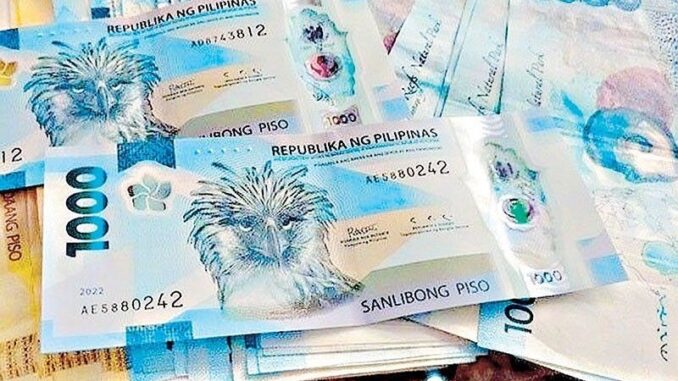
MANILA, Philippines — The share of soured loans to the banking sector’s total loan book fell to 3.47 percent in September from a two-year high of 3.59 percent in August, ending three straight months of acceleration, according to the Bangko Sentral ng Pilipinas (BSP).
Preliminary data released by the BSP showed that the non-performing loan (NPL) ratio of Philippine banks was the lowest in five months or since the 3.45 percent recorded in April.
However, the September figure was higher than the 3.40 percent recorded a year ago.
According to the central bank data, soured loans went up by 16.5 percent to P517.45 billion in September from P444.33 billion in the same month a year ago, while loan disbursements grew by 14.1 percent to P14.9 trillion from P13.06 trillion.
Likewise, the banking sector’s past due loans rose by 15.1 percent to P632.87 billion from P549.93 billion, while restructured loans slipped by 4.1 percent to P294.53 billion in September from P307.24 billion in the same month last year.
Amid the rising soured loans and past due loans, Philippine banks beefed up their loan loss reserves by 4.8 percent to P482.84 billion in September from P460.84 billion in the same month in 2023.
This translated to a loan loss reserve level of 3.24 percent and an NPL coverage ratio of 93.31 percent.
The Monetary Board delivered a 25-basis-point cut last Oct. 16, bringing the total cuts to 50 basis points since it began its easing cycle in August.
Prior to the cuts, the BSP kept its policy rate steady for six straight meetings since November 2023 to anchor inflation and inflation expectations. From May 2022 to October 2023, it hiked rates by 450 basis points to tame inflation.
As part of its shift to a less restrictive monetary policy, BSP Governor Eli Remolona Jr. said the central bank could deliver another 25-basis-point cut in December.
If realized, this will bring the target reverse repurchase rate to 5.75 percent, the lowest since the 5.5 percent in December 2022.
Based on the BSP’s report on the Philippine financial system for the first semester, the central bank said that loan quality remained satisfactory despite the pickup in NPLs.
“The combined effect of challenges from post-pandemic recovery and elevated borrowing costs due to the high interest rate environment affected the paying capacity of both business and individual borrowers,” it said.
Banks’ credit standards also remained intact, supported by sound risk governance, robust strategies as well as precautionary measures, including the beefing up of provisioning to manage potential loan losses.
“Easing market conditions, particularly the moderation of inflationary pressures is seen to provide relief and improve bank borrowers’ repayment capacity,” the BSP said.


Be the first to comment